Illustrated Presentation
The Nobel Assembly at Karolinska Institutet has awarded the Nobel Prize in Physiology or Medicine 2008 to Harald zur Hausen, Françoise Barré-Sinoussi and Luc Montagnier for their discoveries of two viruses causing severe human diseases.
One half is awarded to Harald zur Hausen “for his discovery of human papilloma viruses causing cervical cancer” and the other half jointly to Françoise Barré-Sinoussi and Luc Montagnier “for their discovery of human immunodeficiency virus”.
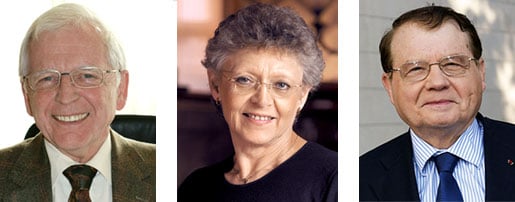
Françoise Barré-Sinoussi, born 1947, Institut Pasteur, Paris, France
Luc Montagnier, born 1932, World Foundation for AIDS Research and Prevention, Paris, France
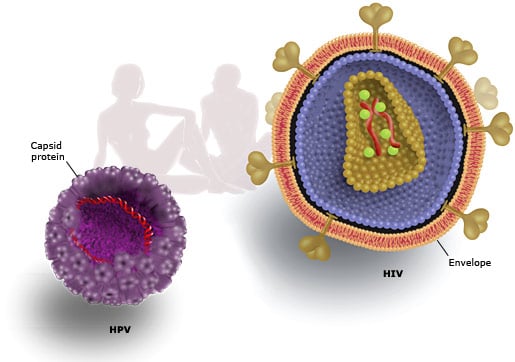
| HPV Human papilloma virus has circular, double-stranded DNA, protected by capsid proteins. Diameter: 55 nm. |
HIV Human immunodeficiency virus is a retrovirus of the lentivirus group. Viral RNA is converted to DNA, which integrates into the cellular genome. Diameter: 90–130 nm. |
Discovery of HPV, human papilloma virus, in cervical cancer
Against the prevailing view during the 1970s, Harald zur Hausen postulated a role for human papilloma virus (HPV) in cervical cancer. He assumed that the tumour cells, if they contained an oncogenic virus, should harbour viral DNA integrated into their genome.
The approach
Harald zur Hausen pursued his idea for over ten years by searching for evidence of HPV forms in tumour cells using probes for known HPV.
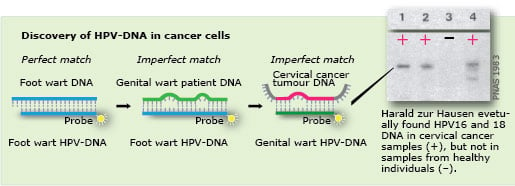
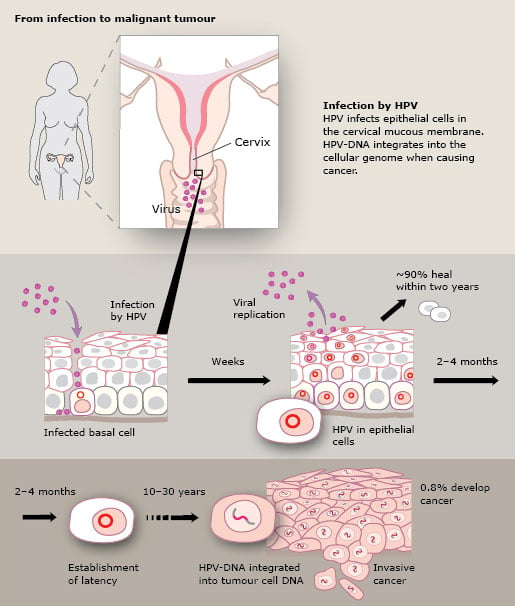
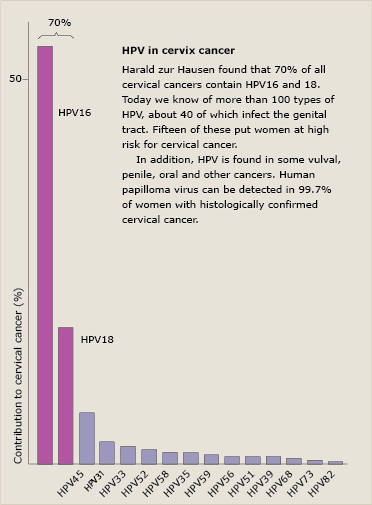
Discovery of HIV, human immunodeficiency virus
Following medical reports of a novel immunodeficiency syndrome in 1981, the search for a causative agent was initiated. Françoise Barré-Sinoussi and Luc Montagnier isolated and cultured lymph node cells from patients that had swollen lymph nodes characteristic of the early stage of acquired immune deficiency.
They detected activity of the retroviral enzyme reverse transcriptase, a direct sign of retrovirus replication. They also found retroviral particles budding from the infected cells. Isolated virus infected and killed lymphocytes from both diseased and healthy donors, and reacted with antibodies from infected patients.
Searching for an unknown retrovirus
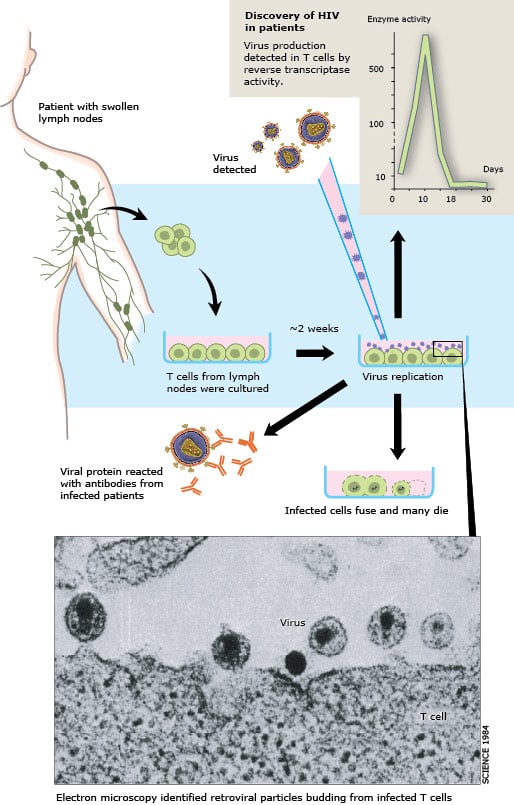
Two global health problems
Distribution of cervical cancer
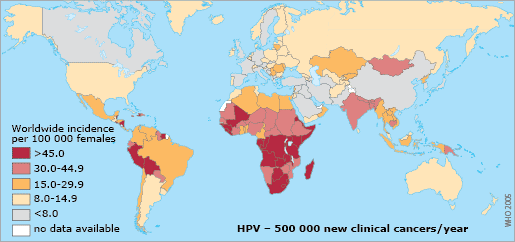
The global public health burden attributable to human papilloma virus is considerable. More than 5% of all cancers worldwide are caused by persistent infection with this virus. Infection by the human papilloma virus is the most common sexually transmitted agent, afflicting 50-80% of the population.
Distribution of HIV-infected individuals
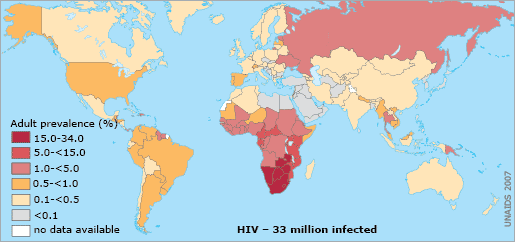
Human immunodeficiency virus has generated a novel pandemic. Successful antiretroviral therapy results in life spans for infected people now reaching levels similar to those of uninfected people. Never before has science and medicine been so quick to discover, identify the origin and provide treatment for a new disease entity.
Credits and references for the 2008 Nobel Poster for Physiology or Medicine
Scientific Advisors, Professors at Karolinska Institutet: Jan Andersson, Infectious Diseases. Bertil Fredholm, Pharmacology, Chair of the Nobel Committee. Hans Jörnvall, Physiological Chemistry, Secretary of the Nobel Assembly. Klas Kärre, Immunology. Björn Vennström, Molecular Biology.
Illustrations and layout: Annika Röhl, Bengt Gullbing
Printed by Alfa Print AB, Stockholm, 2008
Copyright © 2008 The Nobel Committee for Physiology or Medicine at Karolinska Institutet
SE-171 77 Stockholm, Sweden
Web adapted version: Nobelprize.org
Nobel Prize® and the Nobel Prize®medal design mark are the registered trademarks of the Nobel Foundation.
Nobel Poster from the Nobel Committee for Physiology or Medicine, web adapted by Nobel Web
Nobel Prizes and laureates
Six prizes were awarded for achievements that have conferred the greatest benefit to humankind. The 14 laureates' work and discoveries range from quantum tunnelling to promoting democratic rights.
See them all presented here.
